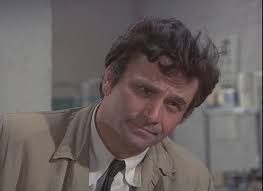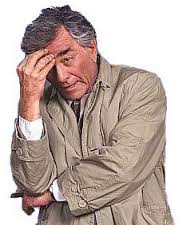The latest Hardy Boys series was released in December 2020 by Hulu and in the Spring of 2021 on YTV in Canada. The series itself was filmed in Canada.
The Plot
The Hardy brothers: Sixteen-year-old Frank (Rohan Campbell) and twelve-year-old Joe (Alexander Elliott) live in “The City” (No word on whether they’ve ever met The Tick). Their world is shattered when their mother is killed.
Their detective father (James Tupper) decides the best possible thing he can do is to dump the boys on his wife’s sister Trudy (Bea Santos) in his wife’s hometown, so he can go investigate a case that relates to his wife’s killing. The hometown is dominated by their mother’s estranged mother Gloria Esterbrook (Linda Thorson, The Avengers) and she has plans of her own for Frank and Joe. Frank and Joe begin to find what they believe to be clues to their mother’s death.
What Works
In my initial review of the first episode, I was not happy that the show’s creators saw fit to back away from the typical close ages that Frank and Joe share in the books, but I can’t help but feel the age gap works.
In the books, Frank and Joe are essentially peers. Frank’s a Senior, Joe’s a Junior, and that’s about it. By putting four years between them, they do a lot of things. They more easily have the two go to separate locations. They each have their own distinct friend group, with Joe particularly close to the adopted daughter of a local police lieutenant Biff Hooper (Riley O’Donnell) The decision also adds a level of drama and conflict between the brothers that you just don’t get in the books. So for a series like this, I can look back and see they made the right decision.
The era of the series is not discussed but it’s clear it’s set before the Internet which makes for a lot more interesting adventure. They have to actually find out things rather than ask Google or search an app. They can’t just be called on a cell phone. Watching this series makes you realize how hard our device-saturated world makes the work of the writer.
The story also does have some consequences and dwell on things that were rarely addressed in the kid’s mysteries I saw. Frank, Joe, and their friends tell lies and deceive a lot of people, including the local police, in order to continue their investigation. There are consequences to this that do pay out and they have to deal with these consequences. Also, Fenton leaving his grieving boys alone for weeks on end is also called out.
In that vain, I think Trudy’s an interesting character. In years past, she’d be the typical clueless adult that the Hardy Boys would run rings around. While initially she fills that bill, she’s not a fool and while she’s not a detective, you don’t have to be one to figure out the Hardy Brothers are hiding something. The way her character is handled is interesting as well as who she is by the end of the story.
Linda Thorson is always a delight and her performance as Gloria Esterbrooke is intriguing. Esterbrooke is written as a character you’re not supposed to figure out what exactly she’s up or or where she stands, and Thorson’s performance is pitch perfect. She makes every scene she’s in better.
The mystery itself has some good twists and intriguing elements that definitely keep the guessing going. Also compared to the storyline of the Nancy Drew TV series, this series didn’t go near as dark.
What Doesn’t Work
With a single storyline for a kids/teen show told over thirteen forty-five minute episodes, this series is too long. While there are some interesting features of this series as we talked about above, the major approaches to the making the series last longer is padding out the story or making it more convoluted than it needs to be.
The great example of both points is the effort by Frank’s grandmother to recruit him into an elite private school. This is a huge focus of Gloria’s efforts for several episodes, quite a bit of time spent there by Frank and the story goes….nowhere. It’s a tedious plot point that’s given so much airtime because we’ve got more than nine hours of story time to fill.
It’s also what we’re told the stakes of the adventure might be. A typical kids mystery will have the kids save a town or a farm. By the end of this, the fate of all humanity hinges on what three guys found in a cave near a small town and what the Hardys do about it. And because this plays into the solution, the solution to the mystery is also ludicrous.
That’s just ridiculous and what’s even more ridiculous is having the kids go around and enroll in school (because Fenton’s long absence pressed through Summer.) Then there’s the question of which girl Frank likes, is it Callie or the new girl at school? These sort of questions are trivial when the fate of the world is at stake. As it is, these just get added to the padding and there’s a lot of it.
Of course, it would be fair to point out that by its nature, the story is not made for me. However, it’s hard for me to imagine Generation Z and Generation Alpha being into a padded thirteen episode series that’s set when their parents were kids.
The Hardy Boys wasn’t bad, but it wasn’t good. It teased a second season, which is coming, but I have no interest in seeing it. I could see some parents thinking this might be a good way to introduce their kids to detective stories, but I think there are better options. The series was set in the 1980s and 90s and was so authentic to the era that it could have been released then. There are a good number of kid-based detective TV shows and movies that were made in this era that are better than the Hardy Boys and available on DVD.
Rating: 3.0 out of 5


